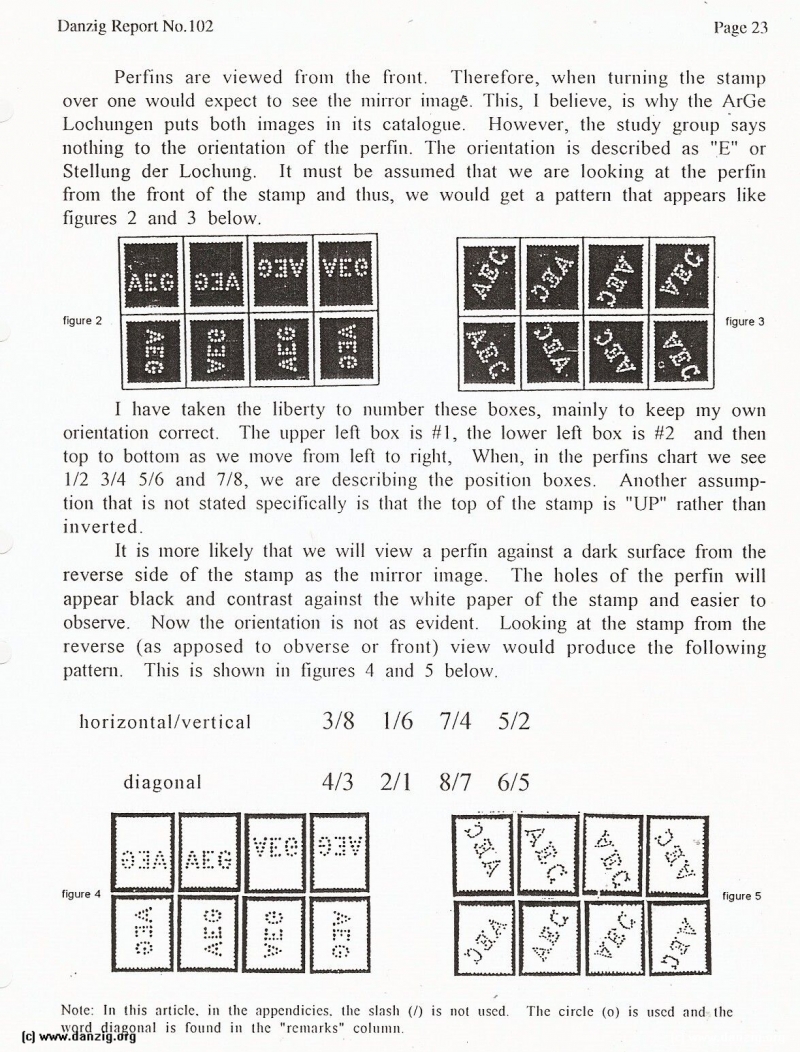
Perfins are viewed ñoin the fioiii. Therefore, when turning the stanhl) over one would expect to see the mirror image. This, I believe, is why the ArGe Lochungen puts both images in its catalogue. However, the study group says nothing to the orientation of the perfin. The orientation is described as “E” or Stellung der Lochung. It must be assumed that we are looking at the perfin from the front of the stamp and thus, we would get a pattern that appears like figures 2 and 3 below.
I have taken the liberty to number these boxes, mainly to keep my own orientation correct. The upper leQ box is #1, the lower left box is #2 and then top to bottom as we move from left to right, When, in the perlins chart we see 1/2 3/4 5/6 and 7/8, we are describing the position boxes. Another assumpt ion that is not stated specifically is that the top of the stamp is “UP” rather than inverted.
It is more likely that we will view a perfin against a clark surface from the reverse side of the stamp as the mirror image. The holes of the perfin will appear black and contrast against the white paper of the stamp and easier to observe. Now the orientation is not as evident. Looking at the stamp from the reverse (as apposed to obverse or front) view would produce the following pattern. This is shown in figures 4 and 5 below.
Note: In this article, in the appendicies. the slash (I) is not used. Tue circle (0) is iiscd and the word diagonal is found in the “remarks” column.
Danzig Report Vol. 1 - Nr. 102 - January - February - March - 1999, Page 23.
Hits: 4136
Added: 23/07/2015
Copyright: 2025 Danzig.org

